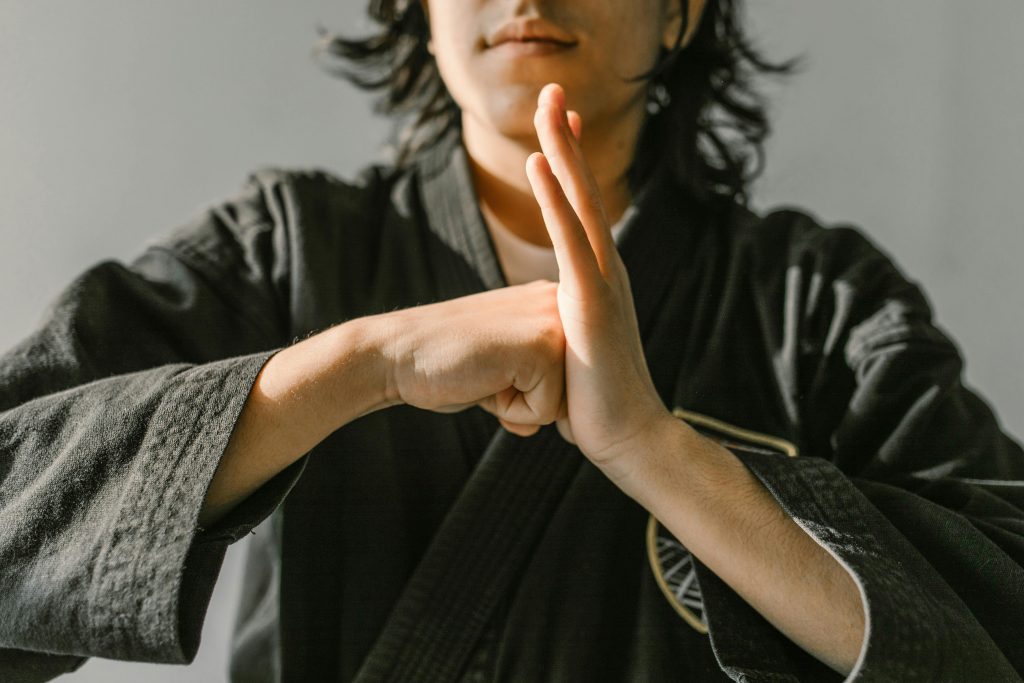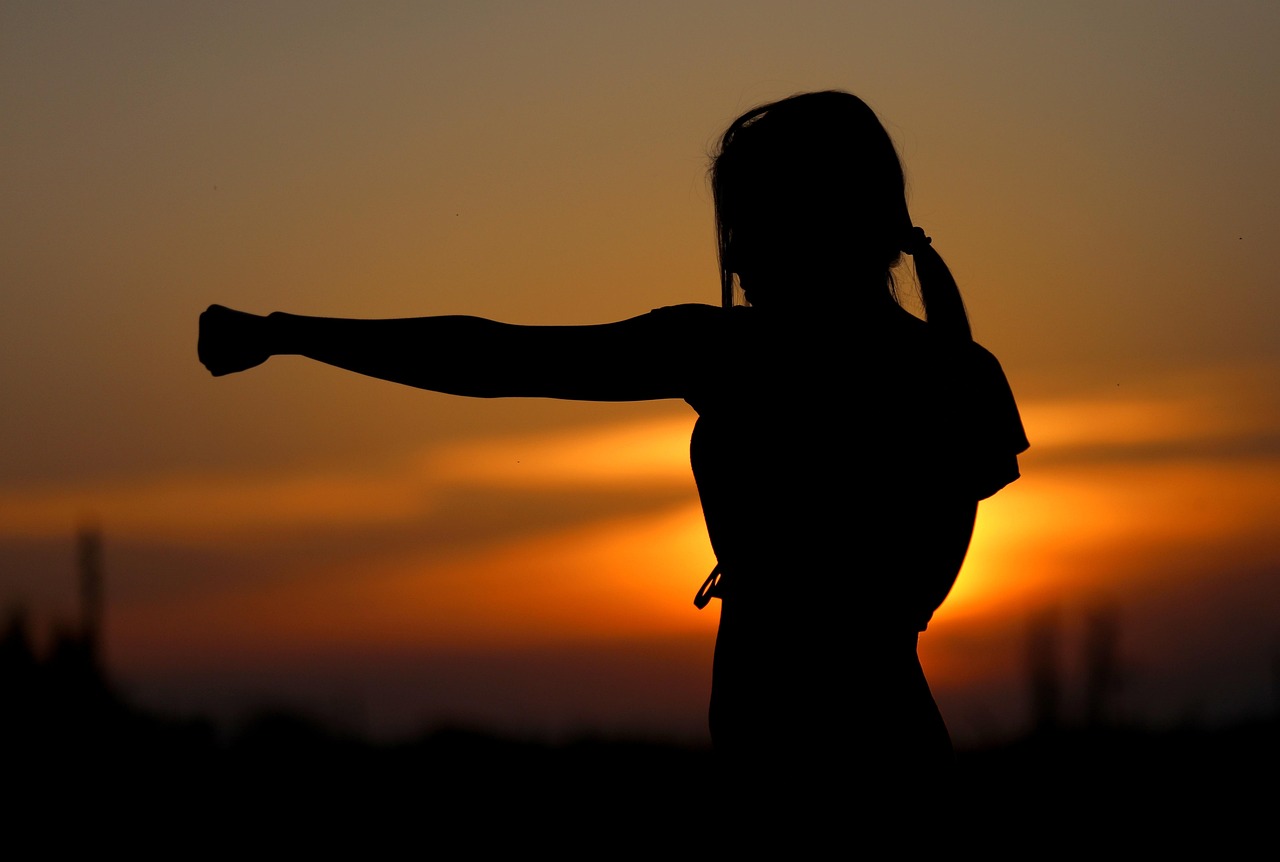
- Karate originated in Okinawa, not Japan, and was heavily influenced by Chinese martial arts, particularly during the 14th–17th centuries.
- Early Okinawan martial arts (Te) merged with Chinese techniques to form Tode, the foundation of modern Karate.
- The term “Karate” originally meant “Chinese hand” and was later changed to “empty hand” under Gichin Funakoshi to reflect Japanese philosophy.
- Okinawan Karate vs. Japanese Karate differ in philosophy, training, movement, weapons use, and belt systems, reflecting their distinct cultural influences.
- Karate became Japanese through modernization, standardization, and alignment with Japanese values like Bushido and Zen.
- Today, Karate is a global martial art, practiced worldwide for self-defense, fitness, mental growth, and character development, blending Okinawan, Chinese, and Japanese influences.
When people think of Karate, they often picture Japan—disciplined dojos, bowing students, and precise strikes. But while Japan played a major role in shaping the Karate we know today, the story of this martial art is far more complex. So, is Karate truly Japanese?
The answer is both yes and no. Karate was born in Okinawa, a small island with deep ties to both China and Japan, and evolved into a global martial art under Japanese influence. To understand Karate’s identity, we have to look at how history, culture, and philosophy merged across centuries to create this powerful discipline.
Where Did Karate Really Come From?
Before Karate became the structured, belt-ranked system we see in dojos around the world, it began as something much simpler—a means of survival.
Okinawa: The Birthplace of Karate
Karate originated in Okinawa, once an independent kingdom known as the Ryukyu Kingdom. This island nation was located between China and Japan, making it a cultural bridge between the two.
Okinawans developed a native form of self-defense called Te (meaning “hand”). It wasn’t yet the Karate we know today but a practical system of strikes, blocks, and defensive maneuvers used for real-world protection.
When Okinawan merchants and scholars traveled to China during the 14th to 17th centuries, they encountered Chinese martial arts (Kung Fu) and brought those ideas home. Over time, these Chinese influences merged with native Okinawan Te, forming the foundation of what would later become Karate.
How Did China Influence Karate’s Development?
The connection between Chinese Kung Fu and early Karate is undeniable. Historical records and oral traditions show that Okinawan masters studied martial arts from Chinese monks and military experts. When examining the evolution of Karate, many enthusiasts compare it with Chinese martial arts, often framing the discussion as Kung Fu vs Karate to highlight their similarities and differences.
Some key influences include:
- White Crane Kung Fu from Fujian province, which inspired the soft, flowing techniques found in some Okinawan styles.
- Shaolin martial arts, known for structured forms and emphasis on discipline.
- Chinese weapon systems, which shaped Okinawan Kobudo (weapons training).
This exchange of ideas helped transform Okinawan Te into a more sophisticated martial system called Tode, which literally means “Chinese hand.”
Interestingly, the word “Karate” itself once used the Chinese character for “Tang” (referring to the Chinese Tang dynasty), so “Karate” originally meant “Chinese hand.” It wasn’t until much later that the term was redefined to mean “empty hand.”
When Did Karate Become Japanese?
The transformation of Karate from an Okinawan fighting art to a Japanese martial discipline began in the early 20th century.
Annexation of Okinawa
In 1879, Japan officially annexed the Ryukyu Kingdom, making Okinawa part of Japan. This political change gradually integrated Okinawan culture, including its martial traditions, into the Japanese sphere.
As Okinawan masters introduced their art to mainland Japan, Karate began to evolve under Japanese influence.
Gichin Funakoshi: The Father of Modern Karate
The man most responsible for bringing Karate to Japan was Gichin Funakoshi, an Okinawan schoolteacher and martial artist.
In 1922, Funakoshi demonstrated Karate in Tokyo at the invitation of Japan’s Ministry of Education. The demonstration was a success, and soon after, he began teaching and refining the art.
Funakoshi’s contributions included:
- Replacing the old Chinese character for “Kara” (meaning Chinese) with a new one meaning “empty.” Thus, Karate came to mean “empty hand.”
- Standardizing training methods and kata (forms).
- Promoting Karate as a means of character development, not just self-defense.
By doing this, Funakoshi aligned Karate with Japanese martial philosophy and helped it gain acceptance as a modern Japanese budo (martial way).
Why Was the Meaning of Karate Changed?
The renaming of Karate from “Chinese hand” to “empty hand” wasn’t just linguistic—it was deeply symbolic.
Japan in the early 1900s was emphasizing national identity and cultural pride. By changing the meaning of “Kara,” Karate became a uniquely Japanese art, distinct from Chinese roots.
The new interpretation—“empty hand”—also carried philosophical weight:
- It represented the idea of defending oneself without weapons.
- It symbolized purity of mind and humility.
- It aligned Karate with Zen Buddhism, a key influence in Japanese martial arts philosophy.
This rebranding helped Karate gain legitimacy in Japanese schools and universities, paving the way for its worldwide spread.
How Did Karate Spread Beyond Japan?
By the mid-20th century, Karate had become one of Japan’s major martial arts, alongside Judo and Kendo.
Post-War Expansion
After World War II, American soldiers stationed in Japan and Okinawa were introduced to Karate. Many brought it back to the United States, sparking global interest.
In the following decades, Japanese masters established dojos around the world, creating international federations and standardized competition rules.
Media and Pop Culture
Karate’s popularity exploded in the 1970s and 1980s, thanks to films like The Karate Kid, Enter the Dragon, and various action movies. Although Bruce Lee practiced Kung Fu, his films contributed to the martial arts boom, which also elevated Karate’s status.
Today, Karate is practiced in over 190 countries and is recognized as an Olympic sport—a testament to its global reach and enduring appeal.
What Are the Differences Between Okinawan Karate and Japanese Karate?
Although often grouped under the single term “Karate,” Okinawan and Japanese Karate have key differences in philosophy, training methods, and techniques. Understanding these distinctions helps clarify Karate’s evolution from a practical self-defense system into a modern martial art.
1. Philosophy and Purpose
- Okinawan Karate: Focused primarily on practical self-defense. Historically, Okinawans faced weapons bans, so Karate was developed to protect oneself using empty-hand techniques. Philosophy emphasizes real-world application and survival.
- Japanese Karate: Influenced by Bushido and Zen, it focuses on discipline, character development, and personal growth. While self-defense remains important, modern Japanese Karate emphasizes the perfection of technique and ethical training.
2. Training Styles
- Okinawan Karate: Training is often more flexible and adaptive. Students practice Kihon (basics), Kata (forms), and Kumite (sparring), but there’s a stronger emphasis on internal energy, body mechanics, and close-range combat.
- Japanese Karate: Training is highly structured and standardized. Kata are performed precisely, and belt-ranking progressions are strictly followed. Sparring often uses controlled contact to develop accuracy and power.
3. Techniques and Movement
- Okinawan Karate: Techniques tend to be short-range and circular, with a mix of hard (striking) and soft (redirecting) methods. Movements are subtle and efficient, designed for real-world defense.
- Japanese Karate: Movements are linear, powerful, and long-range, emphasizing direct strikes with maximum impact. Stances are longer and lower to generate stability and force.
4. Weapons Training
- Okinawan Karate: Often includes Kobudo, which trains students with traditional Okinawan weapons like the bo staff, sai, tonfa, and nunchaku. Weapons were historically used for self-defense during periods of weapons bans.
- Japanese Karate: Weapons are generally not emphasized in most modern dojos. Focus is primarily on unarmed combat, with some exceptions in traditional Karate clubs.
5. Belt System
- Okinawan Karate: Traditional Okinawan schools often did not use belts. Advancement was determined by skill, experience, and recognition from the master (Sifu or Sensei).
- Japanese Karate: Uses a formal belt ranking system from white to black, providing a clear structure for progression and standardized recognition of skill.
6. Cultural Influence
- Okinawan Karate: Strongly reflects Okinawan and Chinese heritage, blending practical techniques with philosophical lessons from Confucianism and Taoism.
- Japanese Karate: Infused with Japanese cultural values, including order, respect, and disciplined training, aligning it with other Japanese martial arts like Judo and Kendo.
How Does Karate Reflect Japanese Culture?
Karate, as practiced in Japan, mirrors the values found throughout Japanese society—discipline, respect, and continuous self-improvement.
Philosophical Foundations
Modern Japanese Karate draws heavily from Bushido, the way of the samurai. Core principles include:
- Rei (Respect) – Bowing before training and competition reflects humility.
- Meiyo (Honor) – Practicing with sincerity and integrity.
- Makoto (Honesty) – Being truthful with oneself and others.
- Sei (Control) – Mastering one’s emotions and reactions.
Karate’s goal isn’t merely to win fights—it’s to cultivate character. This moral focus is captured in the phrase:
“The ultimate aim of Karate lies not in victory or defeat, but in the perfection of character.” — Gichin Funakoshi
Training Etiquette
Karate dojos emphasize:
- Clean uniforms (gi).
- Bowing to instructors (Sensei) and peers.
- Structured routines and group discipline.
These traditions reflect Japan’s cultural emphasis on harmony and order.
What Makes Karate Different From Other Japanese Martial Arts?
Although Karate is now classified as a Japanese martial art, it stands apart in several ways.
Striking vs. Grappling
- Karate focuses primarily on striking techniques—punches, kicks, and open-hand strikes.
- Other Japanese arts like Judo and Aikido emphasize grappling and throws.
No Weapons Training
Karate is typically unarmed, though Okinawan Kobudo includes weapons like the bo staff, sai, and nunchaku.
Philosophical Focus
While all Japanese martial arts value discipline, Karate places special emphasis on simplicity and efficiency, using minimal movement to achieve maximum power.
Why Is Karate Considered Japanese Today?
Even though its roots are Okinawan and influenced by Chinese Kung Fu, Karate is considered Japanese for several reasons:
- Cultural Integration: After Okinawa became part of Japan, Karate was absorbed into Japanese education and martial institutions.
- Philosophical Adaptation: Funakoshi and other pioneers aligned Karate with Japanese values like Bushido and Zen.
- Language and Terminology: Training commands, ranks, and terminology are all in Japanese—words like Sensei, Dojo, Kata, and Kihon define Karate practice globally.
- International Recognition: Japan standardized Karate through federations like the Japan Karate Association (JKA), giving it official national identity.
In short, Karate evolved into a Japanese art with Okinawan soul and Chinese heritage.
Karate’s Global Legacy
Karate’s journey from Okinawan streets to Olympic arenas is a story of cultural fusion and adaptation.
A Worldwide Discipline
Today, millions of people across all ages practice Karate for fitness, self-defense, and mental growth. It’s part of school programs, military training, and personal development worldwide.
Philosophy Beyond Borders
Regardless of where it’s practiced, Karate teaches universal lessons:
- Respect and humility.
- Focus and perseverance.
- Peace over conflict.
Its global spread shows how an art born in one culture can transcend borders while keeping its spirit intact.
Is Karate Japanese? The Balanced Answer
So, is Karate Japanese?
- Historically: No—it was born in Okinawa, influenced heavily by Chinese martial arts.
- Culturally and Philosophically: Yes—it became Japanese through modernization, standardization, and alignment with Japanese martial traditions.
- Spiritually: It belongs to both—a bridge between Chinese philosophy, Okinawan practicality, and Japanese refinement.
Karate’s strength lies in this blend. It’s not purely Japanese or Chinese—it’s a symbol of cultural harmony that continues to evolve.
Closing Thoughts
Karate’s story is one of transformation—born in Okinawa, shaped by China, and refined in Japan. It’s a testament to how cultures can exchange ideas and create something timeless.
While Japan gave Karate its structure and discipline, Okinawa and China gave it heart and history. Together, they formed a martial art that embodies strength, respect, and unity.
So, when someone asks, “Is Karate Japanese?” the best answer might be this:
Karate is not just Japanese—it’s a world art with Asian roots and universal values.

